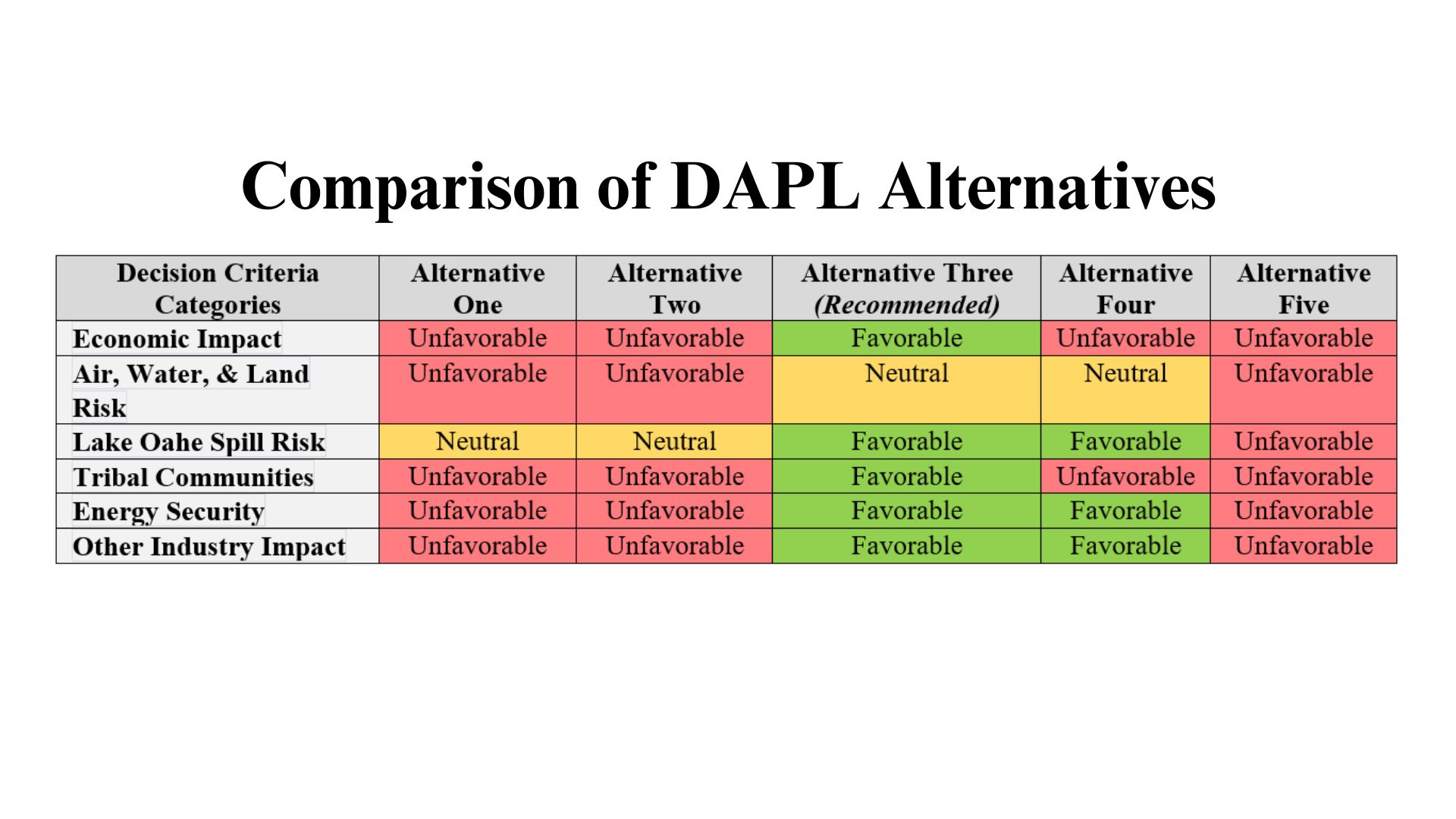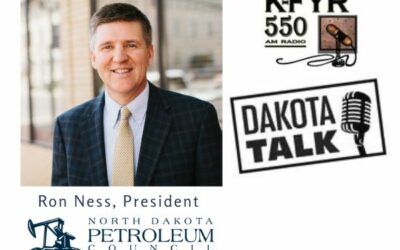
NDPC Comments on Dakota Access Pipeline draft Environmental Impact Statement
The North Dakota Petroleum Council (NDPC) has submitted comment to the U.S. Army Corps of Engineers (USACE) on the draft environmental impact statement (EIS) for the Dakota Access Pipeline (DAPL) that was issued on September 8, 2023. DAPL serves as a vital connection supporting North Dakota’s oil and gas industry, accounts for almost 50,000 employment opportunities, and is one of the most significant economic drivers for the state.
Presently, the pipeline carries approximately half of the oil output from the Bakken region, enabling the distribution of production royalties to private royalty owners, the state, and many Native Americans who hold oil and gas leases for production within reservation lands. Moreover, DAPL has contributed to enhancing the area’s drilling economy by reducing transportation expenses for operators.
Following an in-depth examination of the five alternatives discussed in the Draft EIS, NDPC finds that only Alternative Three is legally, ethically, and practically justified. Alternative Three is a commonsense approach that best balances economic, environmental, safety and community factors. This balance keeps the U.S. oil market supplied with environmentally responsible resources that support good paying jobs and steady income for state, local, and Tribal governments to provide better schools, health care centers, and more for historically impoverished or underserved communities.
Key Benefits of Alternative Three:
Economic Impact: least-cost transportation alternative that supports highest netback for royalty owners and Tribal communities; continued tax revenue for state and preservation of overall economic stability in the North Dakota region.
Air, Water, & Land Risk: requires no new construction, thus a lower environmental impact compared to Alternative Five. Also fosters a lower carbon footprint than Alternative One and Alternative Two, as most volume flowing on DAPL moves to rail and truck if the pipeline is abandoned.
Lake Oahe Spill Risk: pipelines have lower spill rates than alternative transport sources like rail and truck. DAPL is fully encased 95 feet below Lake Oahe and has robust monitoring and leak detection that surpasses regulatory requirements.
Tribal Communities: current route already minimizes intrusion on sacred lands. The current design goes beyond minimum standards to protect the environment. Delivers greatest financial value to support social services and employment.
Other Industries: supports supply chain stability and costs for regional agriculture industry by not competing for rail and trucking that is vital for the agriculture-to-market economy.
You can view the full document here: NDPC Comments on DAPL draft Environmental Impact Statement.
“Alternative Three is a commonsense approach that best balances economic, environmental, safety and community factors.”
-Ron Ness, NDPC President
Other News
Ron Ness Guest Host on KFYR 550 AM Radio’s “Dakota Talk” Show on February 19, 2024
Ron Ness, President of the North Dakota Petroleum Council, was the guest host for the KFYR 550 AM Radio talk show "Dakota Talk" on Monday, February 19, 2024. Dakota Talk Guest Line-Up First Hour: Dale Hoerauf, Director of Career and Technical Education and Director of...
The Future of Oil and Natural Gas Industry in North Dakota Is Bright
OP-ED BY RON NESSWe all benefit from a strong oil and natural gas industry. The billions of dollars in taxes and royalties paid to the State of North Dakota each year pay for education, infrastructure, and social services across our great state. In fact, over 50% of...
NDPC responds to Biden’s Methane Rules
The new methane rules are another step by the Biden Administration to impose stringent and unrealistic targets on the domestic energy industry. U.S. producers are global leaders in emission reduction and continue to make significant advancements each year. However,...



